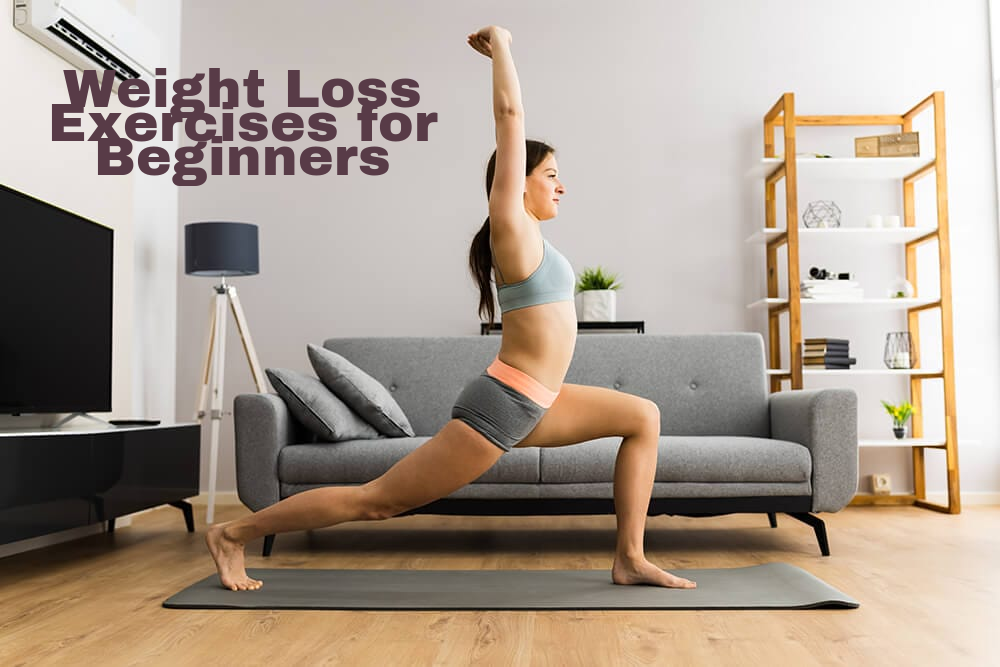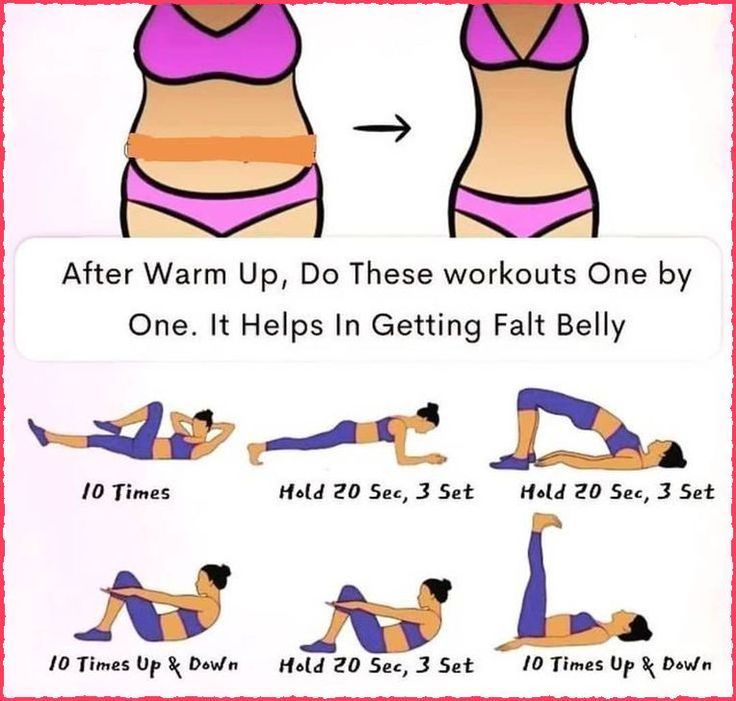
Walking, jogging, and bodyweight exercises are good for beginners. They are easy to start and very helpful. Starting to lose weight can be hard for new people. Picking the right exercises is very important. Walking is simple and helps burn calories. Jogging makes your heart work harder and helps you lose weight.
Bodyweight exercises like squats and push-ups make you stronger. They also help you burn more energy. It is important to exercise regularly. Doing workouts often gives good results over time. Beginners should enjoy easy activities to stay happy.
Slowly doing more exercises helps avoid injuries. Eating healthy food with exercise helps you lose weight faster. Keeping track of your progress keeps you excited and helps you change your routine when needed. Let’s learn more best effective Weight Loss Exercises for Beginners that are easy to start with.
Cardio Basics: Weight Loss Exercises for Beginners
Starting a weight loss journey can be challenging, especially for beginners. One of the most effective ways to burn calories and improve fitness is through cardio exercises. Cardio, short for cardiovascular exercise, gets your heart pumping and helps you shed those extra pounds. Let’s dive into the basics of cardio and how it can benefit you.
Benefits Of Cardio
Cardio exercises come with a plethora of benefits, making them a great choice for weight loss and overall health. Here are some key advantages:
- Burns Calories: Cardio is one of the most efficient ways to burn calories. This helps create a calorie deficit, which is essential for weight loss.
- Improves Heart Health: Regular cardio strengthens your heart and improves circulation, reducing the risk of heart diseases.
- Boosts Mood: Engaging in cardio releases endorphins, often referred to as “feel-good” hormones. This helps elevate your mood and reduce stress levels.
- Enhances Stamina: Consistent cardio workouts increase your endurance, making daily activities easier.
- Supports Metabolism: Cardio exercises can boost your metabolic rate, helping you burn more calories even at rest.
Here’s a quick comparison of the calorie burn for different cardio activities:
| Activity | Calories Burned (30 mins) |
|---|---|
| Running | 300-400 |
| Cycling | 250-400 |
| Swimming | 200-300 |
| Walking | 100-200 |
Types Of Cardio Exercises
Choosing the right cardio exercise can make your workouts more enjoyable and effective. Here are some beginner-friendly options:
- Walking: Walking is a low-impact exercise that is easy to start. You can do it anywhere, and it’s great for building endurance.
- Running: Running burns a lot of calories and improves cardiovascular health. Start with short distances and gradually increase your pace.
- Cycling: Whether on a stationary bike or outdoors, cycling is a fun way to get your heart rate up. It’s also gentle on your joints.
- Jump Rope: Jumping rope is an excellent cardio workout. It burns calories quickly and improves coordination.
- Swimming: Swimming works your entire body. It’s perfect for those who want a full-body workout without stressing the joints.
Each of these exercises can be modified to fit your fitness level. Start slow and gradually increase the intensity as you become more comfortable.
Strength Training: Weight Loss Exercises for Beginners
Starting your weight loss journey can be exciting and challenging. Adding strength training to your routine can make a huge difference. Strength training helps build muscle, burn calories, and improve overall fitness. This blog post covers why strength training is important for weight loss and lists beginner-friendly moves to get you started.
Importance For Weight Loss
Strength training plays a crucial role in weight loss for several reasons:
- Boosts Metabolism: Muscle burns more calories than fat, even at rest. Building muscle increases your resting metabolic rate.
- Burns Calories: Strength training exercises burn calories during and after your workout. This effect is known as the afterburn effect.
- Improves Body Composition: Reducing fat and increasing muscle gives you a leaner appearance. It also makes you stronger and healthier.
- Supports Bone Health: Strength training strengthens bones, reducing the risk of osteoporosis.
- Enhances Mood: Exercise releases endorphins, improving mood and reducing stress.
Here is a quick comparison of the calories burned during 30 minutes of different activities:
| Activity | Calories Burned |
|---|---|
| Running | 300 |
| Strength Training | 200 |
| Yoga | 150 |
Strength training is not just for bodybuilders. It’s a key component of a balanced fitness routine that can help you lose weight and keep it off.
Beginner-friendly Moves
Getting started with strength training doesn’t have to be intimidating. Here are some beginner-friendly moves that you can do at home or in the gym:
- Bodyweight Squats: Stand with feet shoulder-width apart, bend your knees and lower your body. Keep your back straight and push through your heels to stand up.
- Push-Ups: Place your hands on the ground, slightly wider than shoulder-width apart. Lower your body until your chest almost touches the ground. Push back up.
- Plank: Get into a push-up position but rest on your forearms. Keep your body in a straight line from head to heels. Hold the position for as long as possible.
- Glute Bridges: Lie on your back with knees bent and feet flat on the ground. Lift your hips towards the ceiling, squeezing your glutes at the top.
- Bicep Curls: Hold a dumbbell in each hand. Curl the weights towards your shoulders, then lower them slowly.
These exercises target different muscle groups and can be done with minimal equipment. Start with light weights or just your body weight. As you get stronger, increase the weight or the number of repetitions.
Remember to warm up before starting your workout and cool down afterwards. This helps prevent injuries and improves flexibility.
Incorporate these moves into your routine, and you’ll see improvements in strength, muscle tone, and weight loss.
Flexibility And Mobility
Starting your weight loss journey can be challenging, especially for beginners. One crucial aspect often overlooked is flexibility and mobility. Incorporating exercises that enhance these elements not only aids in weight loss but also improves overall health. Flexible and mobile muscles make it easier to perform other exercises and reduce the risk of injuries. These exercises are essential for maintaining a balanced and effective fitness routine.
Stretching Routines
Stretching is a key component of any fitness program. It helps improve flexibility, reduce muscle stiffness, and increase the range of motion. Here are some effective stretching routines for beginners:
- Hamstring Stretch: Sit on the ground with your legs straight. Reach forward and try to touch your toes. Hold for 20-30 seconds.
- Quad Stretch: Stand on one leg and pull the other foot towards your buttocks. Hold for 20-30 seconds and switch legs.
- Shoulder Stretch: Pull one arm across your chest and hold it with the other arm. Hold for 15-20 seconds and switch arms.
- Cat-Cow Stretch: Get on all fours, arch your back (cat) and then dip it (cow). Repeat 10-15 times.
To make your stretching routine more effective, follow these tips:
- Warm up before stretching. This can be a light jog or brisk walk.
- Breathe deeply while stretching. This helps relax your muscles.
- Do not bounce while stretching. Hold each stretch steadily.
- Stretch both sides of your body equally.
Injury Prevention Tips
Preventing injuries is crucial, especially for beginners. Here are some important tips to keep in mind:
- Start Slowly: Do not push your body too hard initially. Gradually increase the intensity and duration of your workouts.
- Use Proper Form: Incorrect form can lead to injuries. Learn the correct technique for each exercise.
- Listen to Your Body: If you feel pain, stop and rest. Pushing through pain can cause serious injuries.
- Stay Hydrated: Drink plenty of water before, during, and after your workout.
Here is a table summarizing injury prevention tips:
| Tip | Description |
|---|---|
| Start Slowly | Gradually increase workout intensity |
| Use Proper Form | Learn correct exercise techniques |
| Listen to Your Body | Rest if you feel pain |
| Stay Hydrated | Drink water before, during, and after workouts |
Incorporating these tips into your fitness routine will help you avoid injuries and maintain a consistent workout schedule. Remember, consistency is key to achieving your weight loss goals.
Bodyweight Exercises
Losing weight can be a challenging journey, but bodyweight exercises are a great way to get started. These exercises don’t need any equipment, making them perfect for beginners. They help build strength, improve flexibility, and burn calories. Let’s explore some effective bodyweight exercises that you can do at home.
Push-ups And Squats
Push-ups and squats are two fundamental exercises that target multiple muscle groups. Push-ups work your chest, shoulders, triceps, and core, while squats focus on your quads, hamstrings, glutes, and lower back.
Push-Ups:
- Start in a plank position with your hands shoulder-width apart.
- Lower your body until your chest nearly touches the floor.
- Push yourself back up to the starting position.
Squats:
- Stand with your feet shoulder-width apart.
- Lower your body as if you’re sitting in a chair.
- Keep your back straight and chest up.
- Return to the starting position.
Lunges And Planks
Lunges and planks are also excellent choices for beginners. Lunges strengthen your legs and glutes, while planks work your core muscles.
Lunges:
- Stand tall with your feet together.
- Step forward with one leg and lower your hips until both knees are bent at 90-degree angles.
- Push back to the starting position.
- Repeat with the other leg.
Planks:
- Start in a push-up position but rest on your forearms instead of your hands.
- Keep your body in a straight line from head to heels.
- Hold the position for as long as you can.
Finding Your Rhythm
Starting your weight loss journey can be exciting and challenging. Finding your rhythm helps you stay motivated and consistent. Understanding your body’s needs and setting a routine can make your path to fitness smoother and more enjoyable.
Setting A Schedule
Creating a workout schedule is vital for consistency. A well-planned schedule helps you stay on track and make exercise a habit. Here are a few tips to get started:
- Start Small: Begin with short, manageable workouts. Try 15-20 minutes, three times a week.
- Choose a Time: Find a time that works best for you. Morning workouts boost your energy, while evening sessions can help you unwind.
- Mix it Up: Include different exercises to keep things interesting. Alternate between cardio, strength training, and flexibility workouts.
Here’s a simple weekly schedule for beginners:
| Day | Exercise | Duration |
|---|---|---|
| Monday | Walking | 20 minutes |
| Wednesday | Bodyweight Exercises | 20 minutes |
| Friday | Yoga | 20 minutes |
Stay Flexible: Life can be unpredictable. Allow room for adjustments in your schedule. If you miss a workout, don’t stress. Just get back on track the next day.
Listening To Your Body
Understanding your body’s signals is crucial. Overdoing it can lead to injuries, while underdoing it may slow your progress. Here’s how to balance:
- Start Slow: Your body needs time to adapt. Gradually increase the intensity and duration of your workouts.
- Recognize Pain: Differentiating between good and bad pain is important. Muscle soreness is normal, but sharp pain is not.
- Rest Days: Rest is as important as exercise. It helps your body recover and prevents burnout.
Here’s a quick guide to help you understand your body’s signals:
| Signal | Action |
|---|---|
| Muscle Soreness | Continue with light activity |
| Sharp Pain | Stop and rest, seek medical advice if it persists |
| Fatigue | Take a rest day |
Hydration and Nutrition: Drink plenty of water and eat balanced meals to fuel your workouts. Listen to hunger cues and eat when necessary.
Sleep: Quality sleep is essential for recovery. Aim for 7-9 hours of sleep each night to help your body rebuild and rejuvenate.

Credit: www.pinterest.com
Staying Motivated
When starting a weight loss journey, it’s crucial to stay motivated throughout the process to achieve your goals successfully. Keeping yourself inspired and focused can make all the difference in your fitness journey. Here are some tips to help you stay motivated while incorporating weight loss exercises for beginners.
Tracking Progress
Tracking your progress is essential to stay motivated. Seeing how far you’ve come can boost your confidence and drive to continue. Here are some ways to track your progress:
- Keep a workout journal to record your exercises, sets, and reps.
- Take regular measurements of your body to see physical changes.
- Use fitness apps or wearable devices to monitor your activity levels and calorie burn.
Setting Realistic Goals
Setting realistic goals is key to maintaining motivation. Unrealistic expectations can lead to frustration and disappointment. Here’s how you can set achievable goals:
- Start with small, attainable goals such as exercising 3 times a week.
- Gradually increase the intensity and duration of your workouts as you progress.
- Celebrate small victories along the way to stay motivated.
Nutrition Considerations
Weight loss exercises for beginners can be exciting and challenging. To get the best results, it’s important to consider your nutrition. Proper nutrition ensures you have the energy to perform your workouts and helps your body recover afterward. Let’s dive into some key nutrition considerations to help you on your weight loss journey.
Also Read: Trampoline Exercises for Weight Loss: Fun and Effective Workouts
Fueling Your Workouts
Fueling your workouts is crucial for maintaining energy levels and improving performance. Here are some tips to help you eat right before and after your exercise sessions:
- Eat a balanced meal 2-3 hours before working out. Include protein, carbohydrates, and healthy fats.
- Choose complex carbs like whole grains, fruits, and vegetables for sustained energy.
- Include lean proteins such as chicken, fish, or plant-based options to support muscle repair.
- Healthy fats like avocados, nuts, and olive oil can provide a slow-burning energy source.
If you need a quick snack before your workout, opt for something light and easy to digest. Here are some examples:
| Snack | Calories |
|---|---|
| Banana with almond butter | 180 |
| Greek yogurt with berries | 150 |
| Oatmeal with a drizzle of honey | 200 |
Post-workout nutrition is just as important. Aim to eat within 45 minutes after exercising. This helps replenish glycogen stores and repairs muscle tissue. A combination of protein and carbohydrates works best. Here are some options:
- Grilled chicken with quinoa and veggies
- Protein shake with a banana
- Whole grain toast with peanut butter
Hydration Tips
Hydration plays a vital role in weight loss and overall health. Drinking enough water helps maintain energy levels and supports metabolic functions. Follow these tips to stay hydrated:
- Drink water before, during, and after your workout. Aim for at least 8 ounces every 15-20 minutes during exercise.
- Start your day with a glass of water. This jump-starts your metabolism and keeps you hydrated from the get-go.
- Carry a water bottle throughout the day. This makes it easy to sip water consistently.
- Monitor your urine color. Light yellow indicates proper hydration, while dark yellow suggests you need more water.
Sometimes, plain water can get boring. Try these hydration alternatives to keep things interesting:
| Beverage | Hydration Benefit |
|---|---|
| Herbal tea | Calorie-free and hydrating |
| Coconut water | Rich in electrolytes |
| Infused water | Flavored with fruits or herbs |
Avoid sugary drinks like soda and energy drinks. They can add unnecessary calories and lead to dehydration. Instead, focus on hydrating beverages that support your weight loss goals.
Creating A Routine
Weight loss exercises for beginners can be exciting and rewarding. Creating a routine is crucial for staying on track and seeing results. A well-planned routine helps you stay motivated and ensures consistent progress. Let’s dive into how you can create an effective workout plan and adjust it as you progress.
Weekly Workout Plan
Starting with a weekly workout plan is essential for beginners. A structured plan keeps you organized and helps you focus on your goals. Here’s a simple yet effective plan to get you started:
- Monday: Cardio (30 minutes) – Brisk walking or light jogging
- Tuesday: Strength Training (30 minutes) – Bodyweight exercises like squats, push-ups, and lunges
- Wednesday: Rest Day – Allow your body to recover
- Thursday: Cardio (30 minutes) – Cycling or swimming
- Friday: Strength Training (30 minutes) – Focus on different muscle groups
- Saturday: Flexibility and Balance (30 minutes) – Yoga or stretching exercises
- Sunday: Active Rest – Light activities like walking or playing with kids
Follow this plan consistently for a few weeks. Make sure to stay hydrated and eat a balanced diet. This combination will help you see noticeable changes in your fitness levels and weight loss journey.
Adjusting As You Progress
As you become more comfortable with your routine, adjustments are necessary to keep challenging your body. Here are some tips to help you modify your plan:
- Increase Intensity: Gradually increase the intensity of your workouts. For example, add more weight to your strength training exercises or increase the speed during cardio sessions.
- Extend Duration: Add more time to your workouts. If you started with 30 minutes, try extending to 45 minutes as your endurance improves.
- Change Exercises: Introduce new exercises to target different muscle groups. This keeps your workouts interesting and prevents plateaus.
- Track Progress: Keep a workout journal to track your progress. Note down the exercises, duration, and any improvements you notice.
- Seek Guidance: If unsure about how to progress, consider consulting a fitness trainer. They can provide personalized advice and adjustments to your routine.
Adjusting your routine ensures continuous progress and keeps you motivated. Listen to your body and make changes that challenge you without causing injury. Regularly updating your plan helps you achieve your weight loss goals effectively.
Frequently Asked Questions
What Are The Best Beginner Weight Loss Exercises?
The best beginner weight loss exercises include walking, jogging, cycling, and swimming. These activities are low-impact and effective. They help burn calories and build endurance. Start with short durations and gradually increase.
How Often Should Beginners Exercise For Weight Loss?
Beginners should aim to exercise at least three times a week. Consistency is key for weight loss. Start with short sessions and gradually increase duration and intensity.
Can I Lose Weight With Bodyweight Exercises?
Yes, bodyweight exercises can help you lose weight. Squats, lunges, and push-ups are effective. They build muscle and boost metabolism. Perform them regularly for best results.
What Should Beginners Eat Before Exercise?
Beginners should eat a small, balanced meal before exercise. Include carbs and protein for energy. Examples are a banana with peanut butter or yogurt with fruit. Eat 1-2 hours before working out.
Conclusion
Starting your weight loss journey with these beginner exercises can be both effective and enjoyable. Consistency is key. Combine these workouts with a balanced diet for optimal results. Remember, progress takes time, so be patient with yourself. Stay committed, and you’ll see improvements in your health and fitness.









